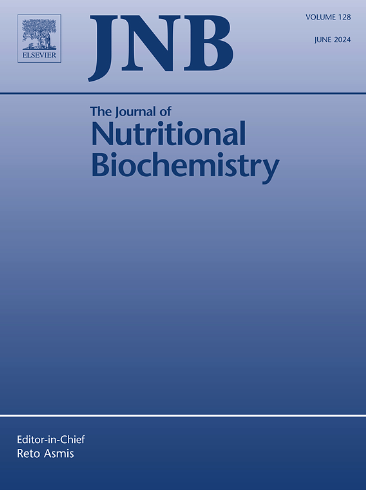Increased fecal glycocholic acid levels correlate with obesity in conjunction with the depletion of archaea: The Dosanco Health Study
IF 4.8
2区 医学
Q1 BIOCHEMISTRY & MOLECULAR BIOLOGY
引用次数: 0
Abstract
Recent studies have focused on the relationship between obesity and gut microbiota. This study aims to identify fecal components and gut bacterial species associated with different BMI categories. In this study, 538 participants aged ≥18 years were categorized into underweight, normal, and obese groups based on BMI (cutoffs: 18.5 and 25.0 kg/m²). We compared 30 fecal components among these groups and calculated correlation coefficients between each component and BMI. Participants were then divided into quartiles based on fecal component levels correlated with BMI, and the prevalence ratio (PR) of obesity was calculated, adjusted for confounding factors. We also analyzed the composition and diversity of gut microbiota and bacterial gene expression among the quartiles for each fecal component. Fecal glycocholic acid (GCA) showed a significant positive correlation with BMI. The PR for obesity in the highest quartile of fecal GCA was 3.30 (95% CI, 1.21–9.54), indicating a significantly higher risk of obesity compared to the lowest quartile. Gut microbiota analysis revealed significant differences in the abundance of Ruminococcaceae Incertae Sedis, Faecalibacterium, and Methanobrevibacter, with Methanobrevibacter being absent in the higher quartiles of fecal GCA. Additionally, gene expression for enzymes involved in the deconjugation of conjugated bile acids, including GCA, was downregulated in the highest quartile. Increased fecal GCA levels are positively correlated with obesity, alongside a depletion of archaea.

求助全文
约1分钟内获得全文
求助全文
来源期刊

Journal of Nutritional Biochemistry
医学-生化与分子生物学
CiteScore
9.50
自引率
3.60%
发文量
237
审稿时长
68 days
期刊介绍:
Devoted to advancements in nutritional sciences, The Journal of Nutritional Biochemistry presents experimental nutrition research as it relates to: biochemistry, molecular biology, toxicology, or physiology.
Rigorous reviews by an international editorial board of distinguished scientists ensure publication of the most current and key research being conducted in nutrition at the cellular, animal and human level. In addition to its monthly features of critical reviews and research articles, The Journal of Nutritional Biochemistry also periodically publishes emerging issues, experimental methods, and other types of articles.
 求助内容:
求助内容: 应助结果提醒方式:
应助结果提醒方式:


